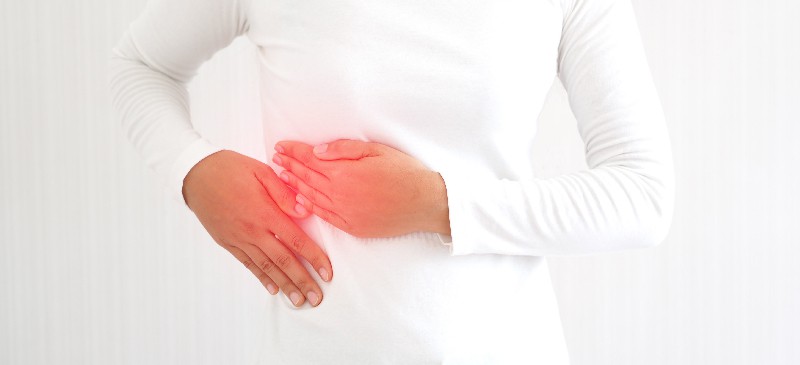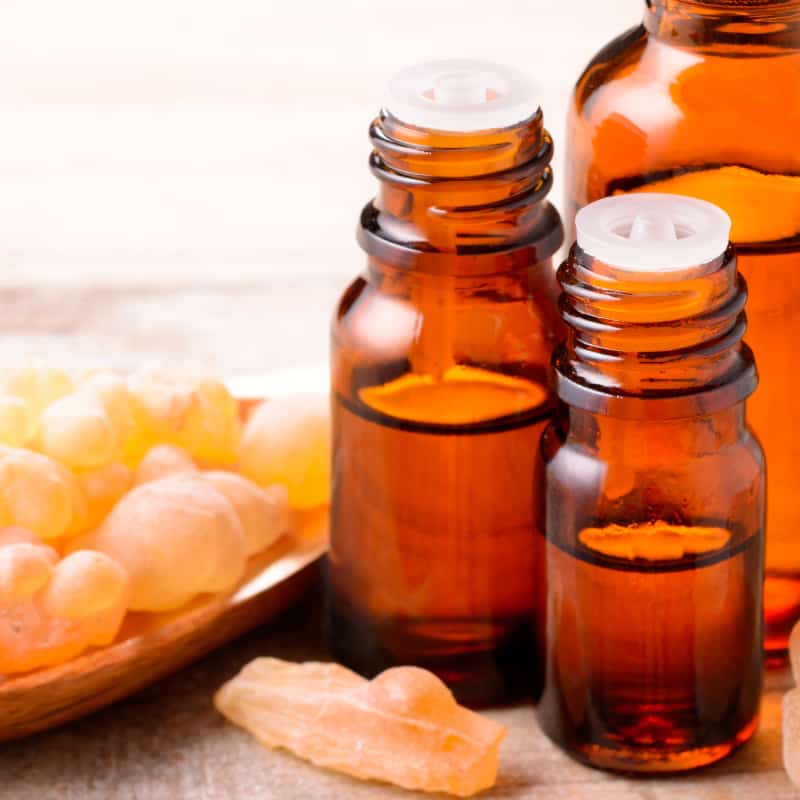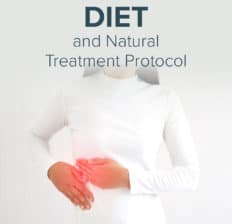This Dr. Axe content is medically reviewed or fact checked to ensure factually accurate information.
With strict editorial sourcing guidelines, we only link to academic research institutions, reputable media sites and, when research is available, medically peer-reviewed studies. Note that the numbers in parentheses (1, 2, etc.) are clickable links to these studies.
The information in our articles is NOT intended to replace a one-on-one relationship with a qualified health care professional and is not intended as medical advice.
This article is based on scientific evidence, written by experts and fact checked by our trained editorial staff. Note that the numbers in parentheses (1, 2, etc.) are clickable links to medically peer-reviewed studies.
Our team includes licensed nutritionists and dietitians, certified health education specialists, as well as certified strength and conditioning specialists, personal trainers and corrective exercise specialists. Our team aims to be not only thorough with its research, but also objective and unbiased.
The information in our articles is NOT intended to replace a one-on-one relationship with a qualified health care professional and is not intended as medical advice.
Gallbladder Diet and Natural Treatment Protocol
May 22, 2023

Many adults suffer from gallbladder problems during middle or late adulthood, especially women — who develop gallstones much more than men do — and cholecystectomy, surgery to remove the gallbladder, is one of the most common operations performed on adults in the United States every year. Yet it’s common for even those who have gallbladder issues to be a bit unsure of what the gallbladder does exactly and that a gallbladder diet can help prevent and treat certain issues.
The gallbladder is a little pear-shaped pouch tucked behind the lobes of the liver. Its main job is to store up the cholesterol-rich bile that’s secreted by the liver, which then helps the body digest fats and lipids within the diet.
Of all the people who experience some sort of gallbladder trouble in their lifetimes, roughly 70 percent of the time that trouble is in the form of gallstones, which form when bile contains excessive amounts of cholesterol.
A variety of problems can occur in the gallbladder in addition to the formation of gallbladder stones, such as the development of gallbladder inflammation (called cholecystitis). What types of factors contribute to gallbladder diseases or emergencies? These can include obesity, eating a poor diet that contributes to nutrient deficiencies, rapid weight loss, taking oral contraceptives (birth control pills), food allergies and certain genetic factors.
Some of the warning signs that you may have a gallbladder problem can include pain and signs of swelling around the gallbladder or frequently having digestive problems due to poor absorption of fats. Treatments that can help naturally prevent or resolve gallbladder issues, and very importantly don’t require surgery, include:
- eating an anti-inflammatory gallbladder diet
- avoiding refined fats and allergen foods
- doing a gallbladder flush to resolve painful stones
- supplementing with anti-inflammatory herbs and enzymes as part of a gallbladder diet
Gallbladder Diet and Other Natural Treatments
1. Follow a Gallbladder Diet
The foods below can help reduce gallbladder distress because overall they’re easier for the body to digest, contain only natural fats and supply important nutrients, like antioxidants and fiber:
- High-fiber foods — Aim for 30–40 grams of fiber per day, which can help reduce the risk of gallstones. Good sources of fiber that support digestion are soaked/sprouted beans and legumes, nuts, seeds along with fresh veggies and fruit.
- Beets, artichoke and dandelion greens — These vegetables especially help support liver health with detoxifying effects and can improve bile flow, which breaks down fat. You can also consume more fresh produce from making your own vegetable juices or smoothies. Try to add potassium-rich foods like avocado, leafy greens, tomato, sweet potato and bananas.
- Unrefined healthy fats (including olive or coconut oil) — Coconut oil contains one of the easiest forms of fat for the body to digest, called medium-chained fatty acids. I recommend consuming healthy fats in small amounts over the course of the day, only about one tablespoon of oil at one time or about two tablespoons of sprouted nuts and seeds. This is because you don’t want to overconsume fats, which puts more stress on the liver and gallbladder. Extra virgin olive oil is another anti-inflammatory fat with many benefits.
- Sprouted nuts and seeds — Sprouted flax, chia, hemp and pumpkin seeds are easier to digest and can reduce inflammation, but only consume one to two tablespoons of sprouted nuts and seeds at a time.
- A diet high in plants, including raw foods — People who eat a gallbladder diet high in raw plants like fruits, vegetables, nuts and seeds tend to have lower occurrence of gallstones. These foods are naturally high in water, electrolytes, antioxidants and fiber but low in salt and fats. Consuming a vegetarian diet is also associated with decreased gallstone risk, as is avoiding processed meats or allergenic dairy foods.
- Lean protein foods — Including lean sources of organic protein in a gallbladder diet can relieve stress. Consider chicken, turkey, grass-fed beef, bison, wild-caught fish and organic protein powder, including protein from bone broth powder.
On the other hand, gallbladder problem foods to avoid on a gallbladder diet include:
- Fried foods and hydrogenated oils — Fast foods, processed oils, and fatty packaged meats or cheese can be some of the hardest foods to properly digest. To cut the amount of unhealthy fats in your diet, reduce intake of lunch/deli meats, convenience foods like chips or cookies, salami and other cured meats, pork products, processed dairy, and conventional, grain-fed animal meat.
- Sugar and simple carbohydrates — Sugar can increase the likelihood the gallstones due to weight gain and inflammation.
- Foods you might be allergic to — Gallbladder problems are potentially related to food allergies. Potential allergens include dairy products, gluten, shellfish, peanuts or nightshade vegetables.
- Conventional dairy products — These foods are pro-inflammatory and can cause your body to produce more gallstones. This includes cheese, ice cream, pizza, etc.
- High-fat meals — It’s been found that gallbladder attacks often follow heavy meals, and they usually occur in the evening or during the night. Any food high in fat can potentially worsen gallbladder issues, especially unhealthy fat. This applies most to refined vegetable oils (like sunflower, safflower, canola, corn, etc.) but can also include even healthy vegetables oils like olive oil in some cases — or even things like almond butter. While having some healthy fats is important, portion control is key. If symptoms become worse when eating even healthy fats, further reduce how much you have at one time, or try another type of fat instead.
2. Use Gallbladder Herbs, Acids and Enzymes
In addition to changing your diet, here are other natural gallbladder supplements to reduce pain and inflammation that should coincide with a gallbladder diet:
- Milk thistle (150 milligrams twice daily) — It’s been shown that milk thistle increases bile flow and aids the liver and gallbladder in detoxification. Research has found that milk thistle is a natural hepatoprotective and works in some of the following ways: It has antioxidant activity, is a toxin blockade at the membrane level, enhances protein synthesis, has antifibrotic activity, and is also capable of producing anti-inflammatory or immunomodulating effects.
- Lipase enzymes (two caps with meals) — This enzyme can offer improvements in fat digestion and the use of bile.
- Bile salts or ox bile (500–1,000 milligrams with meals) — Bile salts and ox bile might help improve the breakdown of fats and can greatly improve gallbladder distress.
- Turmeric (1,000 milligrams daily) — Turmeric and its most active compound, curcumin, have anti-inflammatory properties that can help reduce gallbladder swelling and improve bile flow.
- Dandelion root (500 milligrams with meals) — Dandelion has been used for centuries to improve multiple digestive processes, support health of the liver and regulate use of bile.
- Barberry — This plant extract may help treat gastrointestinal troubles, fight infections, and cleanse the liver and gallbladder.
- Rosemary oil — Mix three drops of rosemary oil with quarter teaspoon of coconut oil and rub over gallbladder area twice daily to help with cleansing and reduce inflammation.

3. Maintain a Healthy Weight without “Crash Dieting”
Being overweight or obese might increase your chances of having gallbladder problems, such as gallstones. This seems to be especially true in overweight, middle-aged females due to the effects that hormonal changes (especially of estrogen) seem to have on the liver.
Obesity has been shown to contribute to higher levels of cholesterol in the liver and can contribute to many different digestive dysfunctions.
Research also shows that people who don’t maintain healthy weight might experience more inflammation and swelling within the gallbladder, especially if they have large amounts of fat around their waists, called visceral fat. Tips for safely reaching and staying at a healthy weight (without over-stressing the digestive organs due to “crash dieting”) include:
- Avoiding “yo-yo dieting” (gaining and losing over and over again). Most yo-yo dieting is the result of fad dieting. Research shows that people who lose more than three pounds per week might have a greater chance of getting gallstones than those who lose weight more slowly and without drastic measures.
- Under-eating due to other health concerns, recovering from weight loss surgery or other reasons for rapid weight loss can also contribute to nutrient deficiencies or electrolyte imbalances that stress the liver.
- Reach a healthy weight safely by focusing on consuming more high-fiber foods as part of a gallbladder diet, drinking water in place of sweetened beverages, eating mindfully, being more active and controlling stress, which can contribute to hormone imbalances or emotional eating.
4. Exercise Regularly
Stay active throughout adulthood and even into older age to protect yourself against gallstones. This is beneficial for hormonal balance, reducing inflammation, overall digestive health and maintaining a healthy weight without needing to dramatically cut calories.
The general recommendation is 30–60 minutes of moderately intense exercise each day, plus several times per week performing strength or full-body HIIT/burst training.
5. Discuss Medications with Your Doctor
If you currently take medications, including oral contraceptives (birth control pills), hormone replacement drugs or cholesterol medications, then discuss with your doctor whether these might be contributing to your gallbladder problems. It’s been found that hormonal medications increase the body’s estrogen stores, which has an influence on cholesterol production.
Common Gallbladder Problems
Gallstones
Some 10 percent to 20 percent of all adults have gallstones, whether they realize it or not. One in every five adults over the age of 65 is believed to have at least one stone. Gallstones that don’t cause symptoms are called asymptomatic, or silent, gallstones.
Gallstones (cholelithiasis) are tiny, solid pieces of matter made up of things like calcium and cholesterol deposits that can stick together and become lodged inside the gallbladder. The gallbladder normally contains only liquids and is not meant to store solid matter, which is why even tiny stones rubbing inside the gallbladder can cause pain and inflammation.
When there isn’t enough bile to saturate the cholesterol, the cholesterol begins to crystallize and then forms a solid gallstone. Risk factors for developing gallstones include being a woman over 40, pregnancy or other hormonal changes, diabetes, a sedentary lifestyle, obesity, and having gallstones run in the family.
Gallbladder Inflammation (Cholecystitis)
Cholecystitis is usually caused by gallstones blocking passages leading to and from the gallbladder, resulting in bile accumulation, duct problems and sometimes tumors. Bile duct problems can contribute to gallbladder issues, but these are rare and only the cause for distress in about 1 percent of patients who need gallbladder surgery.
Some signs you might be developing gallbladder inflammation are having severe pains in your upper right abdomen, pain radiating to your right shoulder, along with nausea or a fever. The biggest risk associated with cholecystitis is the gallbladder becoming so inflamed that it ruptures — often resulting in surgery, hospitalization, and sometimes use of antibiotics and painkillers combined with several days of fasting.

Gallbladder Surgery
It’s estimated that a whopping 750,000 surgeries are performed every year in North America alone in order to remove patients’ painful gallstones and treat cholecystitis. Surgery is needed most in the occurrence of severe gallbladder inflammation or the development of large gallstones that become very painful.
Most gallstones don’t need be removed, however, especially if they don’t cause symptoms. (Many don’t.)
Facts about gallbladder surgery:
- Because cholecystitis can happen over and over again in some patients, surgery to remove the gallbladder is sometimes a last-resort option. Following removal, the gallbladder is not actually needed for survival or digestion because bile can be made to flow into the small intestines. Therefore the gallbladder is said to be a “non-essential organ.”
- A patient having “gallbladder attack” is one reason doctors might choose to perform surgery. Usually one major attack means that more episodes will happen in the future.
- Gallbladder removal surgery is called cholecystectomy, which is performed either invasively or non-invasively. Most often surgery called laparoscopic cholecystectomy is performed using a very small camera attached to a tube that’s inserted through tiny incisions in the abdomen.
- In high-risk patients, gallbladder surgery is usually performed within 48 hours of entering the hospital. Recovery can require staying for several days at the hospital afterward.
- Natural orifice transluminal endoscopic surgery is the newer, non-invasive way to remove the gallbladder that leaves behind less scarring and discomfort. It’s still considered an alternative way to remove the gallbladder so it’s not as widely available yet, but we can expect this to change with time.
- Any surgery poses risks for complications or side effects, but overall, research shows gallbladder surgery side effects are rare. Injuring the bile duct can sometimes occur, which causes bile to leak and possibly an infection.
- Other methods, such as ERCP, are also sometimes used by doctors to remove stones in people who cannot undergo surgery. Gallstones can be removed non-surgically with certain medications, but it’s been shown they often don’t work long term without other lifestyle changes — and often gallstones recur within five years after nonsurgical treatment.
If you wish to avoid surgery (and who doesn’t?) in overcoming your gallbladder pain, the thing to do overall is prevent gallbladder trouble in the first place. It’s also very beneficial to follow a gallbladder diet no matter what treatment option you choose, which works best when it’s consumed long term and helps prevent recurrences.
Precautions
Always get your doctor’s opinion if you suspect you might have gallstones or inflammation of the gallbladder. Although it’s rare, complications can include obstruction of the common bile duct and infection or inflammation that spreads to other organs like the pancreas. These types of serious complications can affect between 10 percent to 15 percent of people with gallstones.
Look for signs, such as lots of pain and swelling, tenderness above the gallbladder, and symptoms indicating a high fever.
Final Thoughts
- Gallbladder problems are most often due to gallstones, hard particles that develop in the gallbladder due to accumulation of bile and too much cholesterol.
- Adults at the highest risk for having gallbladder problems are women over 40, those who are obese or overweight, anyone eating an unhealthy high-fat diet, people taking birth control pills or cholesterol medications, and those with a history of gallbladder issues.
- Gallstones commonly don’t require surgery or even cause any symptoms, but if inflammation of the gallbladder occurs surgery is sometimes needed.
- To help prevent gallstones, “gallbladder attacks” or the need for gallbladder surgery, it’s important to eat an anti-inflammatory gallbladder diet, maintain a healthy weight, exercise and use digestive supplements if necessary.









